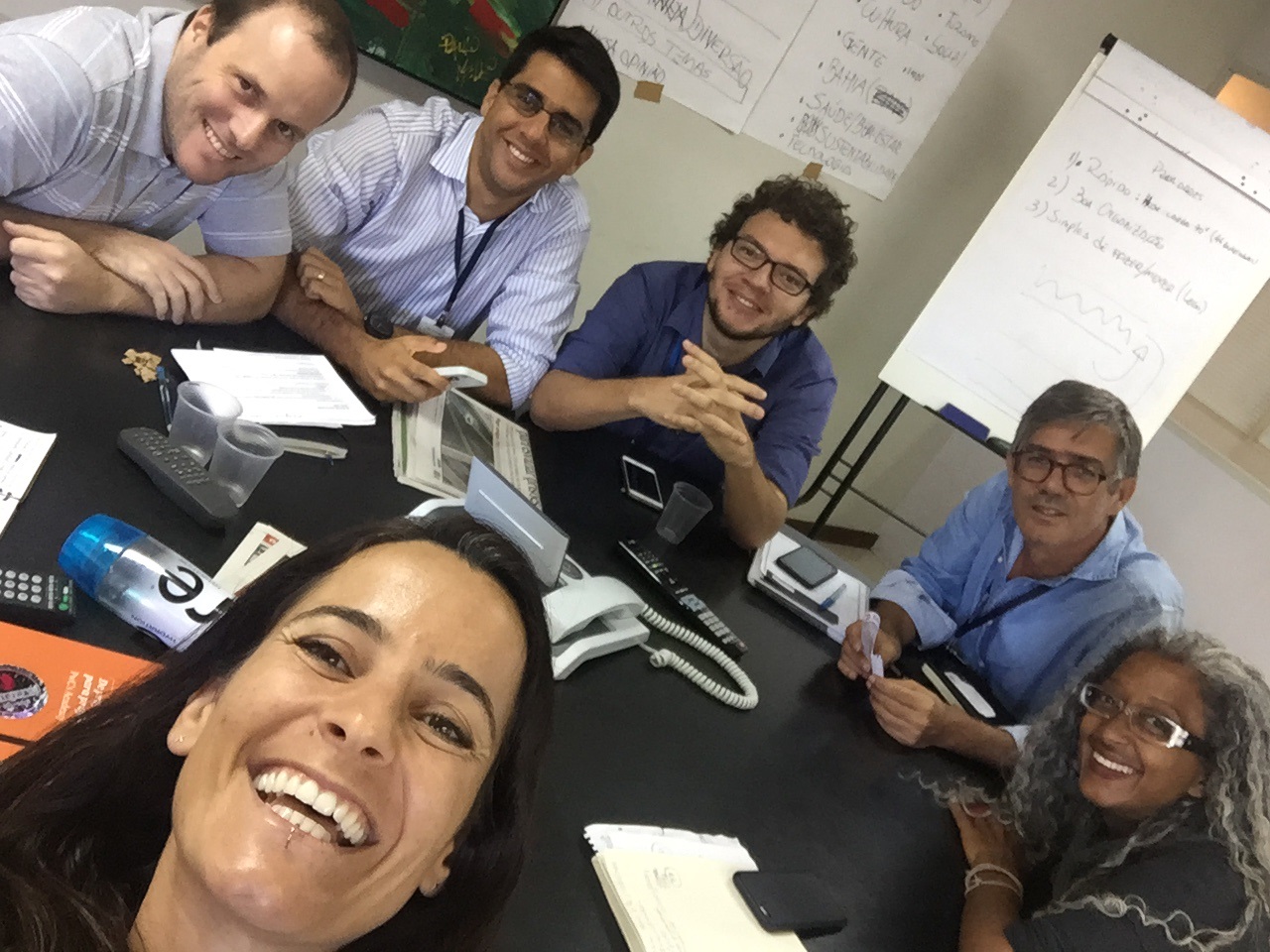Correio is the most widely read newspaper in Brazil’s northeastern Bahia state, although its circulation — about 46,000 — is less than a quarter of those who read Folha or Estadão, the country’s biggest papers.
However, being a local paper with more limited resources hasn’t stopped Correio from embracing newsroom innovation. After former Estadão editorial director Roberto Gazzi became Correio’s executive director last fall, he says he’s made a point of pushing the newspaper towards a more digital mindset, with a quicker turnaround time for web stories and more experimentation with online tools.
Gazzi credits these changes for bringing about a record number of visits to Correio’s website in key metric categories.
“In general, changing is so difficult,” he said. “With Estadão, we had to do the same process, but here I think it’s less difficult because there’s so many young people here in the newsroom.”
One of those younger staffers is Correio’s director of innovation, Juan Jose Torres Gilardi (who was among those awarded the International Center for Journalists’ 2016 Latin America fellowship). Gazzi’s hiring helped accelerate the pace of change at the newspaper, including ensuring that Correio’s 90-person staff wasn’t prioritizing just the print edition, Torres says.
“Everyone was focused on the paper, including the marketing team,” he said. “[Before Gazzi] we had a team of nine or 10 people who were totally isolated and were working exclusively for the website.”
Another boost, Torres added, was getting Mariana Santos — herself a former ICFJ Knight Fellow — to work as a consultant at Correio in January 2017 and help guide them through further transformations.

“She forced us to debate things we were keeping in the background,” Torres explained, adding, “She brought up problems that we didn’t know we had… We have an expression — she was the one who put the elephants in the room.”
Here’s a look at some of the changes implemented by Correio in order to bring a digital-first mindset to a midsize print organization. If any of these sound like changes you’re currently implementing — or would like to — in your newsroom, let us know at IJNeteditor@icfj.org or over at the IJNet Forum.
Interdisciplinary teams
As part of her work at Correio, Santos organized workshops and hackathons to give employees from different departments the chance to interact and collaborate. Four interdisciplinary projects — combining the tech team, reporters and marketers — that were born out of the hackathons are still ongoing. One was an online poll (with accompanying articles) asking readers to vote for the unofficial Carnaval anthem of 2017 in exchange for a chance to meet some of the recording artists.
A scene from a Correio workshop on design thinking, c/o Mariana Santos
Additionally, Torres worked to encourage multi-disciplinary teamwork by organizing staff-led training sessions, while also sending out a bi-weekly, all-staff newsletter highlighting recent trends in journalism innovation.
Another key move by Correio’s leadership was to create a staff position dedicated exclusively to managing social media, rather than hiring another reporter. Part of the staffer’s role involves making sure reporters are using tools like Instagram Stories or Facebook Live to complement their stories when appropriate.
A smarter relationship between editorial and marketing
According to Santos, one of the first issues that struck her when she began working with Correio was the number of pop-up ads on the website. “There was no culture of news first, advertisements second,” she said.

A screenshot from Correio's website when they focused heavily on selling pop-up adds, c/o Juan Torres
Santos encouraged more discussions between Correio’s advertising and editorial teams so they could coordinate what Santos call “a more elegant” way of advertising, with a focus on sponsored content. For example, if the editorial staff knew they were going to run a series on health, they would coordinate with the ad team so that they could focus on selling ad space to clients in that field.
“People were annoyed by the heavy weight of the ads, and they felt for the first time that they were allowed to say it out loud,” Santos said, adding, “It was not me coming in and saying, ‘This is what you’ve gotta do.’ I served as a medium for them to be able to see their own problems and reach their own solutions.”
Staying focused on the newspaper’s core values
When the Correio team decided to rethink their approach to website analytics, they began using Chartbeat to track the metrics they prioritized as most important. As Torres explains, this included categories like loyal readers, loyal pageviews and time spent on the page.
“All our strategy was directed toward loyal [metrics], not just a ‘click’ mindset,” Torres said. Over a six-month period, by January 2017 Correio registered their highest-ever numbers in these categories.
The decision to prioritize attracting more loyal readers, rather than a higher number of overall visitors, formed part of Correio’s commitment to create “value” for their audience, Torres explained.
This mindset helped inform the newspaper’s emphasis on producing in-depth stories, like a special report on rape which was nominated for a Latin America digital media award by the World Association of Newspapers and Publishers. That same report was also recognized by the INMA Global Media Awards, alongside another initiative, produced in part with the media group that owns Correio, that celebrated Afro-Brazilian inspired fashion.
Moving forward, Torres and Gazzi both say they hope to get to a point where everyone on Correio’s staff is constantly thinking about how they can innovate to do their jobs better.
“Innovation should be like a geyser,” Torres said. “It needs to be boiling all the time and sometimes it should just have to explode.”
Photos and videos c/o Mariana Santos
